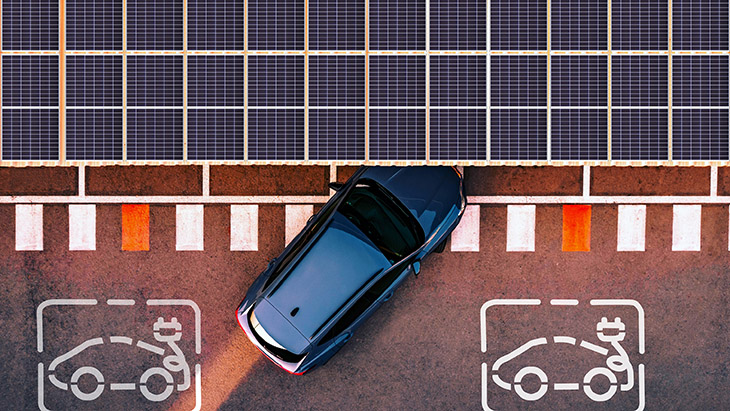

As the world transitions to renewable energy, China is once again demonstrating its ability to lead through scale, strategy, and industrial muscle. Known as the global hub for electric vehicles (EVs), solar panels, and batteries, China is now staking its claim in a burgeoning industry that could define the next phase of green development: large-scale recycling. With an estimated $38.5 billion generated annually from recycling EV batteries and solar cells, China’s circular economy is fast becoming a cornerstone of its sustainability ambitions—and a model for others to follow.
Turning Waste Into Wealth
China’s appetite for industrial metals is enormous, but in a resource-constrained world, it is increasingly turning inward—to its own waste streams. Discarded EV batteries and aging solar panels are now being seen as urban mines, rich in valuable materials such as lithium, cobalt, copper, aluminum, and nickel.
To formalize and scale this opportunity, the State Council launched the China Resources Recycling Group in 2023. The initiative aims to centralize efforts and provide infrastructure for recycling large volumes of electronic waste and renewable energy hardware. According to the Economic Daily, the value of recycled materials from the clean energy sector has more than doubled what analysts once forecasted for the U.S. solar recycling market in 2050—cementing China’s first-mover advantage in this emerging space.
Riding the First Wave of Retired Batteries
As the largest manufacturer of electric vehicles globally, China now faces the unintended consequence of success: millions of EV batteries reaching the end of their life. Experts estimate that within just a few years, up to 4 million tons of used batteries will be retired—posing both an environmental hazard and a massive economic opportunity.
Companies such as Tianli Technology in Zhejiang Province have seized the moment. “We now earn a quarter of our total profits just from battery recycling,” a company representative shared with the South China Morning Post. For Henan Hairui Intelligent Technology, the recycling boom is even more significant. “Seventy percent of our productive capacity is now dedicated to manufacturing machines that recycle batteries and solar panels,” said Ma Long, the company’s sales manager. “There is huge potential in the business of new-energy waste, because new energy is where China and the world are going.”
Standardizing Safety and Sustainability
The central government has not overlooked the environmental stakes of this industrial shift. Lithium-ion batteries contain toxic elements that can contaminate soil and groundwater if improperly handled. To prevent a repeat of the environmental degradation that accompanied previous waves of industrial growth, Beijing has enrolled 156 enterprises into a standardized regulatory framework. This includes protocols for avoiding workplace accidents and minimizing ecological damage during the recycling process.
The incentive for compliance isn’t just environmental stewardship—it’s also economic efficiency. Every gram of nickel or lithium safely recovered reduces the need for costly imports and volatile supply chains, enhancing the competitiveness of domestic firms.
A Solar Superpower’s Next Challenge
While the battery recycling sector is maturing quickly, solar panel recycling still lags behind. This is due in part to the lower immediate environmental risks posed by decommissioned solar modules compared to batteries. Nonetheless, the sheer scale of China’s solar industry suggests that this will soon change.
China surpassed 100 gigawatts of installed photovoltaic capacity as early as 2017. In 2024 alone, it added another 277 GW—equivalent to 15% of the world’s total solar capacity. The country is home to a third of all the solar panels installed globally and dominates every key segment of the supply chain, from polysilicon production to module assembly.
Even in remote deserts, the visual footprint of China’s solar ambition is unmistakable. One project alone comprises over 3 million solar panels, reflecting the intensity of national investment in clean energy infrastructure. But with first-generation solar panels now nearing retirement, recycling infrastructure will need to catch up quickly.
Building the Blueprint for a Circular Future
What distinguishes China’s approach is the state-led alignment of industrial strategy, environmental regulation, and technological innovation. The country isn’t just building EVs and solar panels—it is constructing a full-circle ecosystem that can sustain and regenerate itself.
This $38.5 billion circular economy does more than just recycle materials; it closes the loop on clean energy and strengthens China’s geopolitical positioning in the global green economy. In an era where sustainability is not only a moral imperative but an economic necessity, China’s model may prove both prescient and pivotal.
As Ma Long aptly summarized: “New energy is where China and the world are going.” But just as importantly, China is showing the world where that energy will go after its first life.
What are your thoughts? Please comment below and share this news!
True Activist / Report a typo







